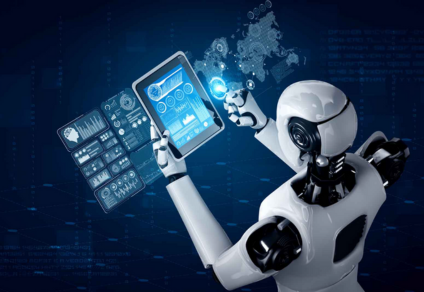
Key hurdles in implementing and leveraging AI
_______ Sankar SanthanaramanThe rise of Artificial Intelligence (AI) has ushered in a new era of innovation, transforming numerous aspects of our lives. However, alongside its immense potential lies a complex web of challenges, particularly in the realm of testing and ensuring responsible development. This blog delves into some of the key hurdles we face in guaranteeing the reliability, safety, and ethical implications of AI systems.
1. The Labyrinth of Uncertainty:
Unlike traditional software, AI systems often exhibit large possible outcomes for the same input. This inherent variability, stemming from their probabilistic nature, makes it difficult to predict and test for every possible scenario. Imagine an AI-powered self-driving car encountering an unforeseen obstacle; traditional deterministic testing methods might struggle to capture such edge cases.
2. A Chameleon's Response:
AI systems are adept at adapting their responses based on the stimuli they receive. This dynamic behavior, while advantageous in certain contexts, poses a challenge for testers. Designing test cases that encompass the ever-evolving nature of AI responses requires a shift from static, pre-defined scenarios to more flexible and adaptable testing strategies.
3. Beyond the Realm of Equations:
The complexity of AI systems often transcends the capabilities of mathematical models. Traditional testing approaches heavily rely on well- defined rules and logic, which may not adequately capture the intricate decision-making processes employed by AI algorithms. This necessitates the exploration of alternative testing techniques that can effectively evaluate the nuanced behavior of these intelligent systems.
4. The Looming Shadow of Bias:
The risk of bias in AI systems is a significant concern. If the training data used to develop these systems is inherently biased, the resulting AI models may perpetuate and amplify those biases in their outputs. This can lead to discriminatory or unfair outcomes, highlighting the crucial need for robust testing methodologies that can detect and mitigate bias throughout the development lifecycle.
5. Blind Faith and the Fragile Trust:
A concerning trend is the blind trust people often place in AI systems. This misplaced trust can stem from a lack of understanding of the limitations and potential pitfalls of these technologies. It is imperative to educate users about the inherent uncertainties and potential biases associated with AI, fostering a more informed and critical perspective.
6. The Race Against Time:
The rapid pace of disruptive changes in the AI landscape presents a unique challenge for testing. Traditional test design approaches often struggle to keep up with the ever-evolving nature of AI algorithms and their applications. Developing agile and adaptable testing methodologies that can accommodate this rapid innovation is crucial for ensuring the ongoing safety and reliability of these systems.
7. Redefining Testing Techniques:
The output of AI systems often necessitates the development of new test techniques. Traditional methods focused on functional testing may not be sufficient to capture the nuances of AI behavior. Exploring alternative approaches, such as adversarial testing and explainability techniques, is essential for comprehensively evaluating the robustness and reliability of these intelligent systems.
8. The Coverage Conundrum:
Test coverage for AI systems remains a significant challenge. The sheer volume and complexity of potential scenarios make it virtually impossible to exhaustively test every possible permutation. This necessitates the development of prioritization strategies and risk-based testing approaches to ensure adequate coverage of critical functionalities and potential failure points.
9. The Ethical Tightrope Walk:
Testing for ethical and unethical behavior in AI systems presents a complex dilemma. Defining and identifying what constitutes ethical behavior for an AI system is itself a challenging task. Developing robust testing methodologies that can effectively evaluate the ethical implications of AI decisions and mitigate potential harms remains an ongoing area of research and development.
10. The Data Dilemma:
Data privacy concerns are paramount when testing AI systems. The vast amounts of data often required for training and testing these systems raise significant questions about data security and user privacy. Implementing robust data governance practices and anonymization techniques is essential to safeguard sensitive information and ensure responsible data handling throughout the testing process.

the software testing landscape is undergoing a significant transformation. While challenges persist, the emergence of new technologies and methodologies offers promising avenues for addressing them.
11. The Echoes of Social Bias:
The potential for social issues or social bias to be embedded within AI systems is a real concern. If the data used to train these systems reflects societal biases, the resulting AI models may perpetuate and amplify those biases in their outputs. Mitigating this risk requires careful selection of training data, implementation of bias detection techniques, and ongoing monitoring of AI behavior for potential discriminatory outcomes.
12. The Legacy of Biased Training:
Biased training models can lead to discriminatory outputs from AI systems. Testing methodologies need to be equipped to identify and address these biases, ensuring that AI systems are developed and deployed in a fair and equitable manner.
13. Outdated Test Design Techniques:
Traditional test design methodologies, heavily reliant on manual test case creation, struggle to keep pace with the complexity and dynamism of modern software. These techniques often fail to capture the intricate functionalities and edge cases inherent in today's applications, leading to incomplete test coverage and potential vulnerabilities.
14. The Probabilistic Nature of Functional Behavior:
Many software functionalities exhibit probabilistic behavior, meaning their outcomes can vary based on certain conditions or user interactions. This inherent randomness poses a significant challenge for traditional deterministic testing approaches, which often struggle to effectively test and ensure the reliability of such systems.
15. The Rise of AI in Test Automation:
While Artificial Intelligence (AI) has revolutionized various aspects of software development, its impact on test automation remains a double-edged sword. While AI-powered tools can automate repetitive tasks and generate comprehensive test cases, their reliance on training data and algorithms introduces new challenges. Biases in training data can lead to biased test suites, and the "black box" nature of certain AI algorithms can make it difficult to understand and debug automation failures.
16. Fundamental Challenges with Test Automation:
Despite advancements, fundamental challenges persist in the realm of test automation. Maintaining automated test suites can be time-consuming and resource-intensive, especially as software evolves rapidly. Additionally, ensuring the effectiveness and efficiency of automated tests requires ongoing effort and expertise.
17. The Need for Data Science and Math Skills:
The growing adoption of AI and machine learning in testing necessitates a shift in the skillset required for testers. Familiarity with data science concepts, statistical analysis, and basic mathematics becomes crucial for effectively utilizing and interpreting data-driven testing approaches.
18. Test Data Design:
Designing effective test data remains a critical yet often overlooked aspect of software testing. With the increasing complexity of software systems, the need for robust and representative test data becomes paramount. Techniques like combinatorial testing and data mutation can help create comprehensive test data sets that challenge the system under various conditions.
19. New Risks Coexist with Old Ones:
While new technologies introduce novel challenges, traditional testing concerns haven't vanished. Security vulnerabilities, performance bottlenecks, and compatibility issues continue to pose significant risks, requiring a balanced approach that addresses both established and emerging threats.
20. Fixing Discovered Defects:
Even the most rigorous testing efforts can't guarantee flawless software. Efficiently fixing discovered defects remains crucial for maintaining software quality. This necessitates clear communication between testers and developers, effective defect tracking and prioritization, and a robust development process that prioritizes timely resolution of identified issues.
In conclusion, the software testing landscape is undergoing a significant transformation. While challenges persist, the emergence of new technologies and methodologies offers promising avenues for addressing them. By embracing continuous learning, adopting data-driven approaches, and fostering collaboration between testers, developers, and data scientists, we can navigate the evolving landscape and ensure the delivery of high-quality, reliable software.
.png)